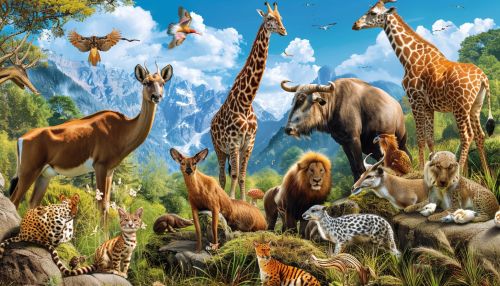Longest Living Animals
Introduction
Longevity in animals is a fascinating field of study within the broader scope of biology. It involves the examination of life spans across different species, with a particular focus on those animals that live exceptionally long lives. This article will delve into the world of the longest living animals, providing a comprehensive and detailed exploration of this captivating subject.
Understanding Longevity in Animals
Longevity in animals refers to the maximum lifespan or the length of life of an animal species under ideal conditions. It is different from life expectancy, which is the average lifespan expected under normal conditions. Longevity is influenced by a variety of factors, including genetics, environment, diet, and lifestyle. Some animals have developed unique adaptations that allow them to live exceptionally long lives, a phenomenon known as senescence.
Factors Influencing Longevity
Several factors influence the longevity of animals. These include:
- Genetics: Certain genes have been identified that influence longevity. These genes are involved in processes such as DNA repair, stress resistance, and metabolism.
- Environment: The conditions in which an animal lives can significantly impact its lifespan. This includes factors such as temperature, availability of food, and presence of predators.
- Diet: What an animal eats can also affect its lifespan. Some diets are associated with longer lives, while others can lead to shorter lives.
- Lifestyle: The way an animal lives, including its activity levels and social interactions, can influence its lifespan.


Longest Living Animals
Several animals are known for their exceptional longevity. This section will explore some of these species in detail.
Bowhead Whale
The bowhead whale is one of the longest living mammals. It is believed to live for over 200 years. The age of these whales is often determined by examining the changes in the amino acids in their eye lenses.
Greenland Shark
The Greenland shark is one of the longest living vertebrates, with an estimated lifespan of up to 500 years. The age of these sharks is determined by radiocarbon dating the lenses of their eyes.
Ocean Quahog
The ocean quahog, a species of clam, is another exceptionally long-lived animal. One individual, known as Ming, was estimated to be 507 years old at the time of its death.
Tortoises
Several species of tortoises are known for their long lifespans. The Aldabra giant tortoise, for example, can live for more than 150 years.
Red Sea Urchin
The red sea urchin is one of the longest living invertebrates, with a lifespan of up to 200 years.
Adaptations for Longevity
Animals with long lifespans have developed a variety of adaptations to achieve their longevity. These include:
- Slow Metabolism: Many long-lived animals have slow metabolic rates, which reduces the wear and tear on their bodies and slows the aging process.
- Efficient DNA Repair: Some long-lived animals have efficient DNA repair mechanisms, which can prevent the accumulation of DNA damage that can lead to aging and disease.
- Resistance to Stress: Many long-lived animals are resistant to stress, which can help them survive in harsh environments and live longer lives.
Conclusion
The study of longevity in animals provides fascinating insights into the biology of aging. By understanding the factors that contribute to longevity and the adaptations that some animals have developed to live long lives, scientists hope to gain a better understanding of the aging process and how it might be influenced.
